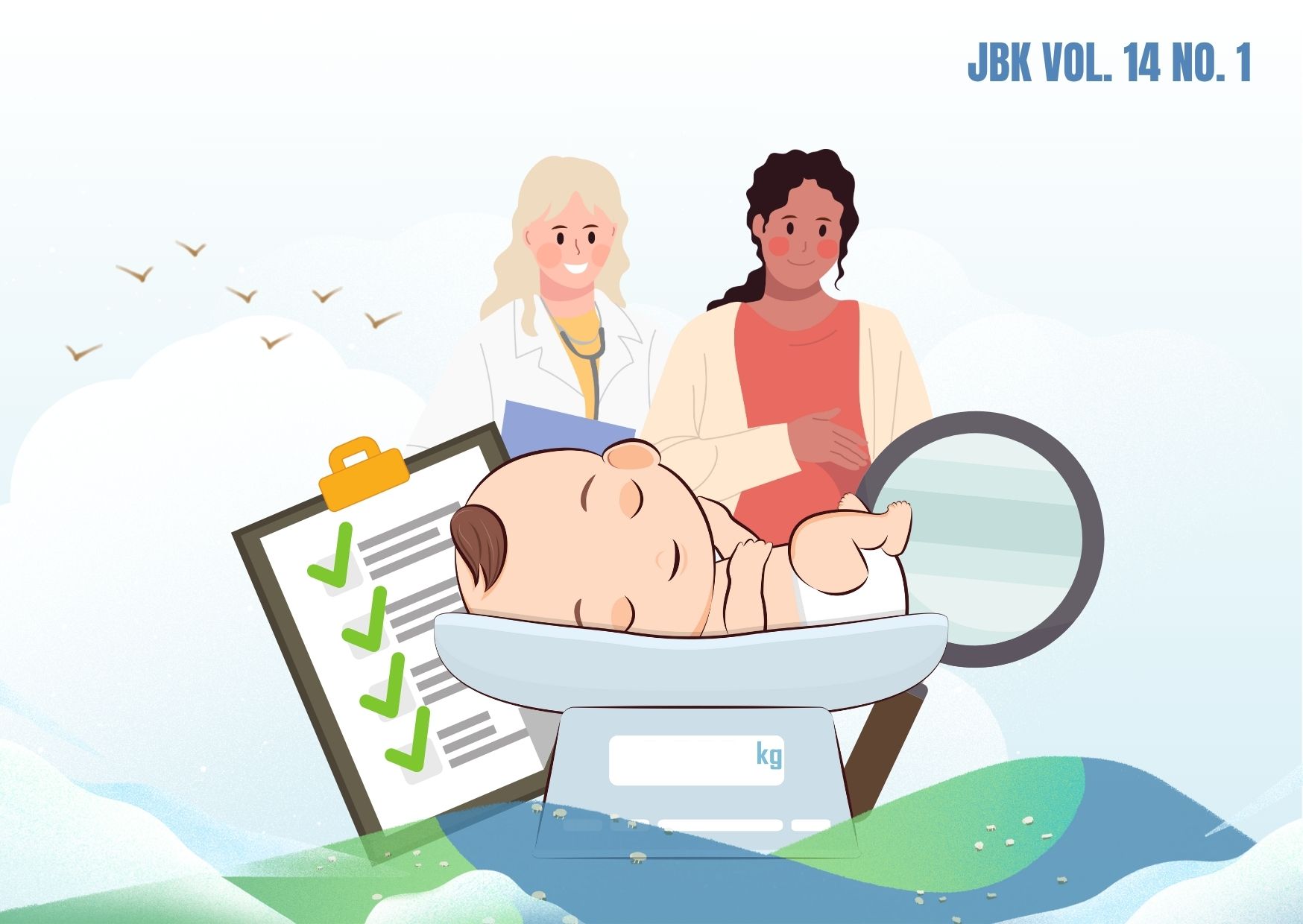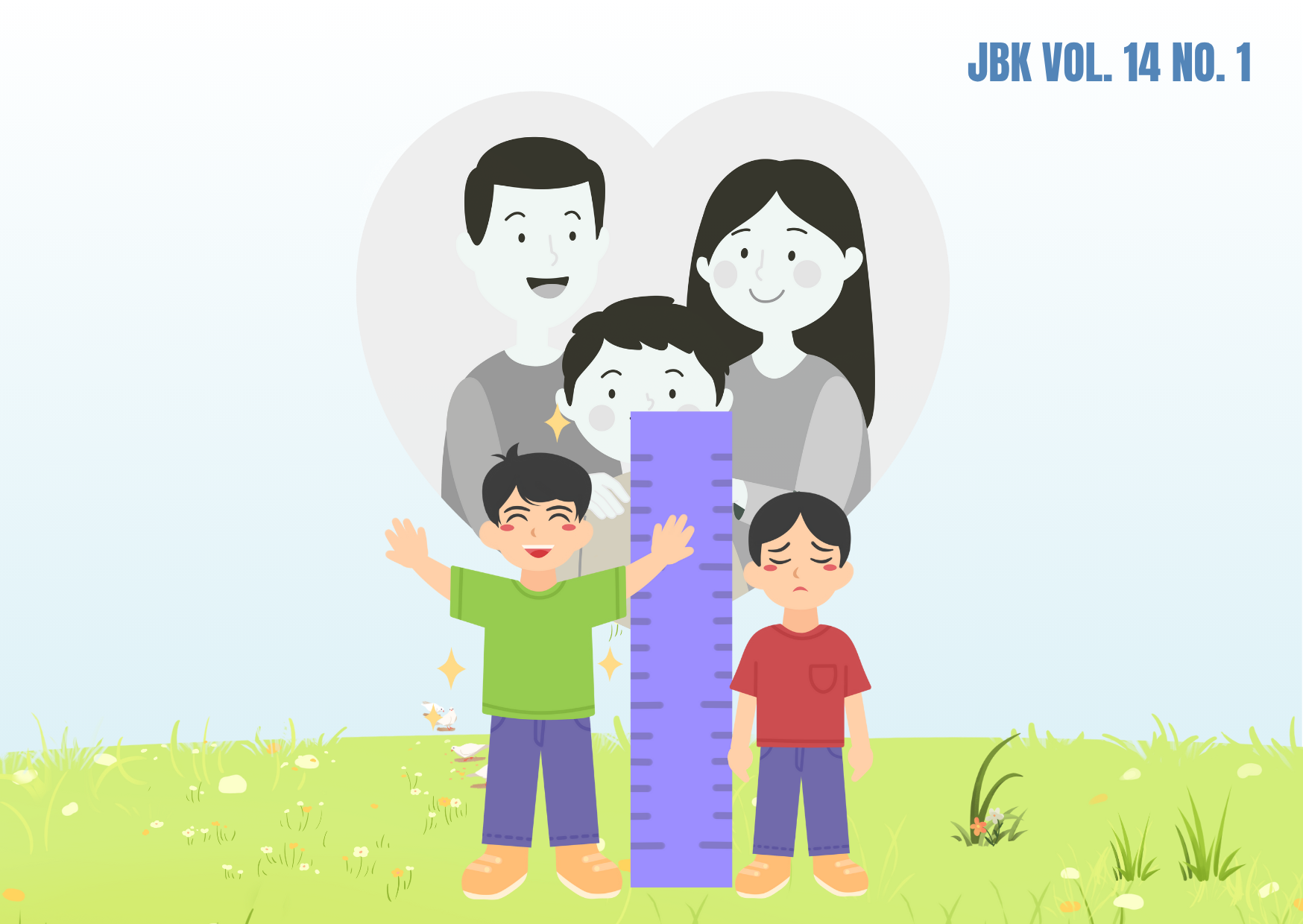CAUSES OF DIFFERENCES IN AGING PERIOD BETWEEN PROVINCES IN INDONESIA: ANALYSIS USING PANEL DATA AND LOGISTIC REGRESSIONS
Downloads
Indonesia entered a period of aging population in 2022 with the percentage of the elderly population reaching 7% and an elderly dependency ratio reaching 10%. This aging condition is experienced differently between provinces. Some provinces have entered this period, while others haven't. This study aims to describe the process of population aging at the provincial level as well as examine the causes of differences in population aging periods between provinces in Indonesia. This study uses secondary data from the Central Bureau of Statistics covering 33 provinces in Indonesia in 2010, 2015, and 2020. Aggregate (macro) data were analyzed descriptively using the aging degree index to describe differences in the speed of the population aging process and by statistical inference using binary logistic method and panel data regression to identify causes of variations in population aging period between provinces. Logistic regression results show that provinces with characteristics of many residents migrating out, high population density, many people who already have proper sanitation, high per capita spending, and low unemployment rates, have the opportunity to enter a period of population aging more quickly than provinces without these criteria. Panel data regression results show that the aging population in Indonesia is more dominated by socioeconomic factors than demographic, health, and environmental factors. The results confirm that a holistic development approach must be pursued by the government. More attention should be given to demographic, health, and environmental aspects. Thus, population aging occurs in a quality manner accompanied by the welfare of the elderly population.
Adioetomo SM. Penuaan Penduduk dan Pemenuhan Hak-Hak Lansia. In: Penuaan Penduduk dan Pemenuhan Hak-Hak Lansia. 2022. Materi pada Webinar Hari Kependudukan Dunia. 11 Juli 2022.
Prayitno S. Penduduk Lanjut Usia: Tinjauan Teori, Masalah dan Implikasi Kebijakan. Masy Kebud dan Polit [Internet]. 1999;4:45–50. Available from: http://journal.unair.ac.id/download-fullpapers-04-Hargo.pdf
Junaidi J, Hardiani H. Dasar-Dasar Teori Ekonomi Kependudukan [Internet]. Jambi: Hamada Prima; 2009. 165 p. Available from: https://www.academia.edu/12360058/Dasar_Dasar_Teori_Ekonomi_Kependudukan
Siregar KN, Suwandono A. Transisi Demografi di Indonesia: Seabad? Media Penelit dan Pengemb Kesehat [Internet]. 1992;2(1):1–3. Available from: http://ejournal.litbang.kemkes.go.id/index.php/MPK/article/view/685
Lesthaeghe R. The Unfolding Story of the Second Demographic Transition. Popul Dev Rev [Internet]. 2010;36(2):211–251. Available from: https://doi.org/10.1111/j.1728-4457.2010.00328.x
Wu Y, Song Y, Yu T. Spatial Differences in China's Population Aging and Influencing Factors: The Perspectives of Spatial Dependence and Spatial Heterogeneity. Sustainability [Internet]. 2019;11(21):1–20. Available from: https://doi.org/10.3390/su11215959
Xu X, Zhao Y, Zhang X, Xia S. Identifying the Impact of Social, Economic, and Environmental Factors on Population Aging in the Yangtze River Delta Using the Geographical Detector Technique. Sustainability [Internet]. 2018;10(5):1–15. Available from: https://doi.org/10.3390/su10051528
Sriyana J. Dampak Transisi Demografi terhadap Defisit Fiskal di Indonesia. J Ekon Pembang Kaji Ekon Negara Berkembang [Internet]. 2008;13(3):175–189. Available from: https://journal.uii.ac.id/JEP/article/view/1995
Cicih LHM, Nugroho DNA. Kondisi Lanjut Usia di Indonesia Era Bonus Demografi. Sosio Inf [Internet]. 2021;7(2):158–171. Available from: https://dx.doi.org/10.33007/inf.v7i2.2681
Affandi M. Faktor-Faktor yang Mempengaruhi Penduduk Lanjut Usia Memilih untuk Bekerja. J Indones Appl Econ [Internet]. 2009;3(2):99–110. Available from: https://doi.org/10.21776/ub.JIAE.003.02.1
Ainistikmalia N. Determinants of The Elderly Female Population with Low Economic Status in Indonesia. J Ilmu Ekon Terap [Internet]. 2019;4(2):85–100. Available from: https://e-journal.unair.ac.id/JIET/article/view/14033
Lestari S, S ED, Santoso J. Keberadaan Penduduk Lanjut Usia dalam Peta Penduduk Kabupaten Banyumas Tahun 2020. In: Prosiding Seminar Nasional dan Call for Papers [Internet]. Purwokerto; 2021. p. 391–400. Available from: http://www.jurnal.lppm.unsoed.ac.id/ojs/index.php/Prosiding/article/view/1804/1564
Magdalena F. Penuaan Penduduk Sulawesi Utara: Peluang atau Hambatan. Forum Ilmu Sos [Internet]. 2019;46(1):19–25. Available from: https://journal.unnes.ac.id/nju/index.php/FIS/article/view/16921
Vibriyanti D. Surabaya Menuju Kota Ramah Lansia: Peluang dan Tantangan. J Kependud Indones [Internet]. 2018;13(2):117–132. Available from: https://ejurnal.kependudukan.lipi.go.id/index.php/jki/article/view/321
Central Bureau of Statistics. Proyeksi Penduduk Indonesia 2015-2045: Hasil SUPAS 2015 [Internet]. Jakarta: Bappenas, Badan Pusat Statistik, UNFPA; 2018. 480 p. Available from: https://indonesia.unfpa.org/sites/default/files/pub-pdf/Proyeksi Penduduk 2015-2045_.pdf
Central Bureau of Statistics. Proyeksi Penduduk Indoensia 2010-2035 [Internet]. Jakarta: Bappenas, Badan Pusat Statistik, UNFPA; 2013. 472 p. Available from: https://perpustakaan.bappenas.go.id/e-library/file_upload/koleksi/migrasi-data-publikasi/file/Policy_Paper/Proyeksi_Penduduk_Indonesia_2010-2035.pdf
Indonesian Ministry of Health. Profil Kesehatan Indonesia 2010 [Internet]. Jakarta: Kementerian Kesehatan Republik Indonesia; 2011. 367 p. Available from: https://www.kemkes.go.id/article/view/13010200017/download-pusdatin-profil-kesehatan-indonesia-2010.html
Indonesian Ministry of Health. Profil Kesehatan Indonesia 2015 [Internet]. Jakarta: Kementerian Kesehatan Republik Indonesia; 2016. Available from: https://www.kemkes.go.id/article/view/16091600001/-profil-kesehatan-indonesia-tahun-2015.html
Indonesian Ministry of Health. Profil Kesehatan Indonesia 2020 [Internet]. Jakarta: Kementerian Kesehatan Republik Indonesia; 2021. 480 p. Available from: https://www.kemkes.go.id/downloads/resources/download/pusdatin/profil-kesehatan-indonesia/Profil-Kesehatan-Indonesia-Tahun-2020.pdf
Gujarati D. Ekonometrika Dasar. Hutauruk G, editor. Jakarta: Erlangga; 2003. 418 p.
Gujarati D. Basic Econometrics. 5th edition. New York: The McGraw-Hill, Inc; 2009.
Hosmer DW, Lemeshow S. Applied Logistic Regression, Second Edition [Internet]. Second. Wiley-Interscience Publication; 2000. Available from: https://doi.org/10.1002/0471722146
Peterson EWF. The Role of Population in Economic Growth. SAGE Journals [Internet]. 2017;7(4):1–15. Available from: https://doi.org/10.1177/2158244017736094
Astina IKA, Ahmad WIW. Penuaan Penduduk dan Permasalahannya di Indonesia. J Pembang Sos [Internet]. 2011;14:89–107. Available from: http://dx.doi.org/10.32890/jps.14.2011.11450
Wilopo SA. Transisi Demografi dan Pembangunan Berkelanjutan. Popul J Kependud dan Kebijak [Internet]. 1995;6(1):19–37. Available from: https://jurnal.ugm.ac.id/populasi/article/view/11443/8510
Soemodinoto S, Suwandono A. Kecenderungan Transisi Demografi dan Epidemiologi Suatu Fenomena Penting terhadap Masalah Gizi dan Kesehatan pada Pra-Lansia dan Lansia. Bul Penelit Sist Kesehat [Internet]. 1997;1(1):1–22. Available from: https://media.neliti.com/media/publications-test/20983-kecenderungan-transisi-demografi-dan-epi-4eff6563.pdf
Lv J, Wang W, Li Y. Effect of Environmental Factors on the Longevous People in China. Arch Gerontol Geriartrics [Internet]. 2011;53(2):200–205. Available from: https://www.sciencedirect.com/science/article/abs/pii/S016749431000261X
Danasari LS, Wibowo A. Analisis Angka Harapan Hidup di Jawa Timur Tahun 2015. J Biometrika dan Kependud [Internet]. 2017;6(1):17–25. Available from: https://doi.org/10.20473/jbk.v6i1.2017.17-25
Copyright (c) 2023 Jurnal Biometrika dan Kependudukan (Journal of Biometrics and Population)

This work is licensed under a Creative Commons Attribution-NonCommercial-ShareAlike 4.0 International License.
Copyright©2022 Jurnal Biometrika dan Kependudukan (Journal of Biometrics and Population)
This work is licensed under a Creative Commons Attribution-NonCommercial-ShareAlike 4.0 International License.
1. Copyright of all journal manuscripts is held by the Jurnal Biometrika dan Kependudukan.
2. Formal legal provisions to access digital articles of the electronic journals are subject to the provision of the Creative Commons Attribution-ShareAlike license (CC BY-NC-SA), which means that Jurnal Kesehatan Biometrika dan Kependudukan to keep, transfer media/format, manage in the form of databases, maintain, and publish articles.
3. Published manuscripts both printed and electronic are open access for educational, research, and library purposes. Additionally, the editorial board is not responsible for any violations of copyright law.



































